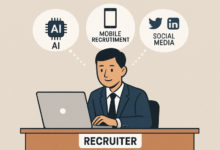
What Does it Mean to be Inclusive at Work
We often hear the term “inclusion” bandied about in the workplace, but what does it genuinely mean to be inclusive? It’s more than just having a diverse mix of people; it’s about creating an environment where everyone feels valued, respected, and empowered to participate and contribute their unique perspectives and talents fully. It’s about building a workplace where everyone truly belongs.
Think of an inclusive workplace as a beautifully orchestrated orchestra. You have individuals with different instruments (skills, backgrounds, experiences). Still, everyone plays a vital part, and the result is more prosperous and more harmonious than if only one type of instrument were present.
In the Australian context, this concept is becoming increasingly important, particularly with the upcoming “Inclusive Employment Australia” program. It is a Govt. program in Australia and will replace the current (DES) Disability Employment Services program later in 2025.
This initiative underscores the national commitment to creating workplaces where individuals with disabilities have equitable opportunities to find and maintain meaningful employment. It highlights that inclusion isn’t just a moral imperative but also a key to unlocking a wider pool of talent acquisition and fostering a more representative workforce.
So, what does being inclusive at work look and feel like in practice? It boils down to several key principles:
1. Respecting Diversity: This is more than just recognising individual differences. It entails truly valuing and honouring the range of origins, life experiences, identities, and viewpoints that every person contributes. Gender, race, age, disability, sexual orientation, socioeconomic status, and other distinctions are all included in this.
2. Developing a Feeling of Belonging: The goal of inclusion is to ensure that each individual feels like an important member of the team and genuinely belongs. This entails cultivating a culture in which individuals feel free to express their thoughts, be authentic, and know that they are valued and accepted for who they are.
3. Promoting Equality: An inclusive workplace strives to ensure that every individual can reach and advance within the organisation, regardless of their background. It doesn’t imply treating everyone in precisely the same way, but making adjustments and offering support so that nobody is left behind. Employment inclusion for people with disabilities is a top priority for “inclusive employment Australia”.
4. Encouraging Diverse Viewpoints: Being inclusive means encouraging people from many backgrounds to share their thoughts. When people have different experiences, they typically think and solve problems differently which can make conversations more interesting and result in innovative ideas.
5. Challenging Exclusion and Discrimination: An inclusive workplace actively challenges and addresses any forms of exclusion, discrimination, or bias, whether conscious or unconscious. This requires ongoing awareness, education, and a commitment to creating a fair and equal atmosphere for all.
Table of Contents
Addressing Common Challenges
Creating an inclusive workplace isn’t without its challenges. Sometimes biases — conscious or unconscious — can get in the way. At other times, it’s simply a matter of a lack of awareness or understanding.
Here’s how organisations can overcome common barriers:
1. Unconscious Bias
We all carry assumptions shaped by our upbringing and environment. Regular training and self-awareness exercises help identify and reduce bias in decision-making.
2. Resistance to Change
Some employees may feel threatened or uncomfortable with changes to the status quo. Open dialogue, leadership buy-in, and clear communication are key to easing this transition.
3. Lack of Representation
If certain groups aren’t present at the leadership level, it can be hard for others to feel they belong. Companies should strive to establish pipelines that foster career advancement for underrepresented employees.
4. Tokenism
Inclusivity is not a box to tick. It needs to be genuine. Avoid symbolic gestures and focus on systemic, meaningful changes that make a real difference.
Practical Ways to Foster Inclusion:
Being inclusive isn’t just an abstract idea; it translates into tangible actions within the workplace. This could include:
- Offering flexible working schedules to manage diverse needs.
- Ensuring accessibility in physical and digital spaces.
- Using inclusive language in all communications.
- Providing diverse and inclusion training to all employees.
- Establishing employee resource groups (ERGs) to support different communities within the workforce.
- Actively seeking diverse candidates during recruitment.
- Making reasonable adjustments for people with disabilities is a key focus of “Inclusive Employment Australia”.
- Promoting inclusive leadership that champions diversity and equity.
- Creating opportunities for dialogue and fostering understanding among diverse groups.
- Frequently reviewing policies and practices to identify and resolve any potential barriers to inclusion.
The Advantages of an Inclusive Work Environment:
In addition to being the moral thing to do, fostering an inclusive workplace is also a smart business move. Workplaces that are inclusive typically encounter the following:
- Increased morale and engagement among employees.
- Greater originality and inventiveness.
- Improved ability to solve problems.
- Enhanced appeal of skill and reputation.
- A more robust feeling of community.
Australia’s transition to “inclusive employment Australia” will only increase the emphasis on creating these really inclusive workplaces, which will result in a more just and successful society for all.
What does being inclusive at work mean to you? What actions have you seen make a real difference? Share your thoughts in the comments below.








